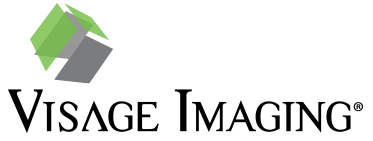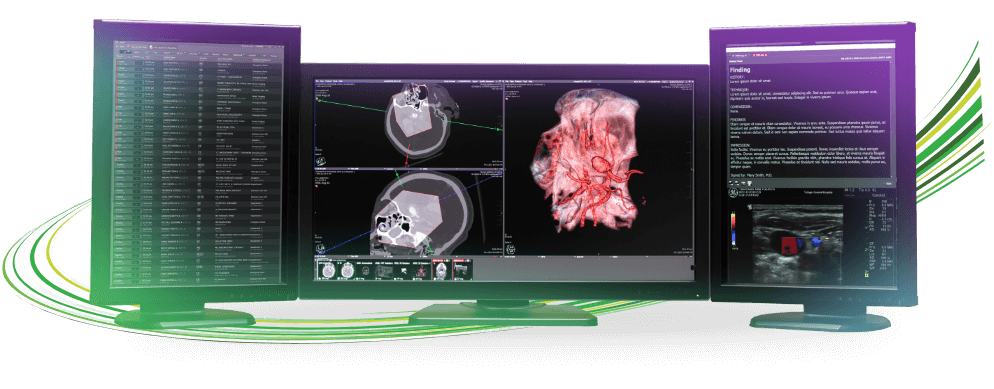Can you? Visage can. Vol. 1 Speed | Chapter 6: Regional Enterprise Imaging

With this post, we're starting the home stretch of our "speed" series of blogs, “Can you? Visage can.” In our last chapter, we shared how even in 2017, most diagnostic viewers are not ambidextrous. Meaning, unlike Visage 7, most diagnostic viewers do not perform as well at-home for remote reading as they do local at the hospital or imaging center. Given how mobile today's healthcare professionals are, that's an unconscionable limitation and should not be tolerated for today's standard of care.
Over the past several years, consolidation has truly transformed the healthcare landscape. Community hospitals have been acquired and merged to create large regional networks, many with academic medical centers as their flagships. Outpatient imaging chains continue to grow, many via merger and acquistion. Additionally, many radiology groups have been acquired into regional and national networks, creating massive radiology organizations of hundreds of radiologists, performing millions of new studies with hybrid models of outsourced, onsite and remote teleradiology reading services. But when we speak with many of these growing regional and national organizations (inpatient/outpatient/hybrid) their technology stack is all too frequently a heterogenous mix of legacy solutions. It's a mishmash of disparate technologies that offer no consistency, no foundation for streamlined operations and economies of scale you'd otherwise expect to see in a large network. When we talk to these groups, many don't think that a single, regional or national enterprise imaging platform is even remotely possible.......until they learn about the capabilities of Visage 7.
And that brings us to our next topic in Chapter 6: Regional Enterprise Imaging.

Regional Enterprise Imaging
Since the early days of PACS, it has usually been a foregone conclusion that there was a 1:1 relationship between the # of PACS “server instances” and the # of locations needing to be served. Six hospitals? Six different local instances of the PACS. Much like Goldilocks, if the study mix was ‘just right’, or if the local volume was ‘not too big’, or if the distance between facilities was ‘not too far’, or if the WAN connection was ‘stable with adequate capacity’, perhaps you could get away with supporting 2 or slightly more locations with one PACS instance. Of course there would be other questions, such as cross-site reading, enterprise access to priors, performance implications, and other limitations. As an aside, it’s quite common for Visage to visit multi-location health systems that have standardized on the same vendor PACS, with each location having their own PACS servers. Almost universally the local hospitals are islands of PACS, with zero or restricted access to the other PACS, even though they are all in the same system. Sometimes ‘manual’ access is a workaround provided through swivel chair workflow (e.g., multiple dedicated workstations for each facility) or through a manual KVM switch. This is not a regional enterprise imaging system. This is a tinkertoy implementation.
With Visage 7, regional or even national implementations are reality, and at significant scale.
We often discuss a regional customer example as a speed comparison to multiple legacy PACS. Our Visage 7 customer reads for several large hospitals, using two of the most widely used legacy PACS in the hospitals, but remotely their radiologists read using Visage 7. Both of the legacy PACS were LAN-connected at 1 Gbps, while Visage 7 was WAN-connected at 5 Mbps. With every study type, even though the network was 200X slower, Visage 7 opened the studies faster than either of the other legacy PACS. And… in each of the legacy PACS, the data was already cached on the local workstation! Similarly, another one of our enterprise customers performed interpretation tests from one of their hospitals on the east coast of the US, connected to their datacenter in the upper midwest, a mere 1,350 miles away. It was consistently faster, in fact dramatically faster to display images in Visage 7, streamed from 1,350 miles away, then it was to display the same images in the local legacy PACS. For the first time in the history of this nationally distributed enterprise, their radiologists will soon be able to interpret imaging studies and have access to priors from anywhere their patients present in the system.
Stay tuned. Next up for "Can you? Visage can" is Chapter 7: Thin-Slice Reading.




